Some nbody plot images
The numbers refer to the examples in the ssnbody documentation.
Random spherical distribution of bodies
1. A unusually stable 3-body system. Newtonian integration.
-

2. A 10-body system. Newtonian integration.
-
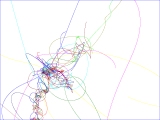
3. A 20-body system. Newtonian integration.
-
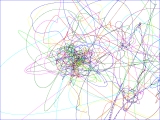
4. A 100-body system. Newtonian integration.
-
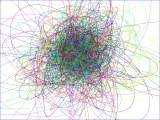
The Solar system
5. This is a relativistic (PPN) integration of the Solar system (the Sun, Moon,
planets and the 5 large asteroids Ceres, Pallas, Vesta, Iris and Bamberga)
from year 1980 January 1 to 2000 January 1 in equatorial coordinates. The
coordinates and masses for the Sun, Moon and planets comes from JPL
DE403. The coordinates and some of the masses of the asteroids come from
the JPL HORIZON program. The plot shows the Solar system out to 4 au
so that Jupiter's orbit is partly seen.
-

6. This plot shows the Solar system (the same as in example 5) rotated to
ecliptic coordinates (i.e. to the ecliptic plane). The ecliptic plane is the plane
of the Earth's orbit (and approximately the other planets) around the Sun.
-
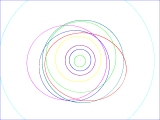
Double pulsars
8. A double pulsar. Relativistic (PPN) integration. The mass of each pulsar
body is about 101 Msun. This is much higher than for real pulsars to enhance
the relativistic periastron rotation.
-

9. A pulsar with a smaller orbiting body. Relativistic (PPN) integration. The
masses of the bodies are about 101 Msun and 0.101 Msun. The first value is
much higher than for real pulsars to enhance the relativistic periastron rotation.
-
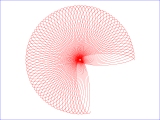
"Galaxies" and rings
10. Two interacting "galaxies". Newtonian integration. Note, these "galaxies"
have very little to do with real galaxies, but it is still interesting to see the
result.
-
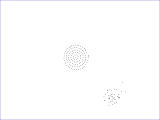
11. A rotating 32-body ring. Very unstable. Newtonian integration.
-

Author: Stefan Spännare
E-mail: stefan@NOspaennareSPAM.se
(Please remove NO and SPAM before sending)
Latest update: 2006-10-09










